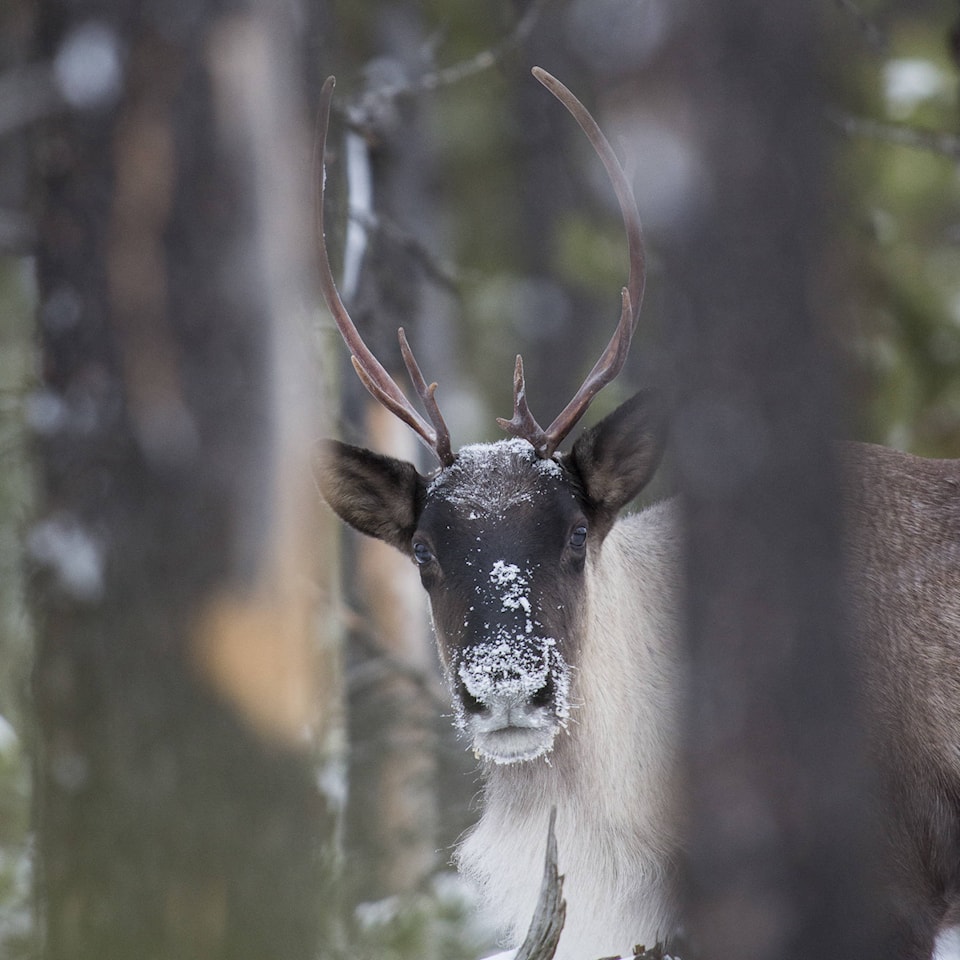What began as a way to spend a month in between expeditions soon turned into a years-long project for a Washington photographer.
David Moskowitz first started exploring mountain caribou two-and-a-half years ago. He thought he’d maybe take some still photographs, write something for a magazine and call it a day, but he couldn’t turn away. Moskowitz ended up creating a documentary film and is currently writing a book.
He was in Revelstoke Friday night for the screening of Last Stand: Vanishing Caribou Rainforest.
“After a month up here, this story, I just couldn’t walk away from it,” he said by way of introduction to the movie.
At just over 30 minutes, Last Stand packs a lot of punch into a short amount of time.
The cinematography is beautiful, offering sweeping views of the Selkirks and Kootenays as the filmmaker and crew search for the mountain caribou.
When mountain caribou researcher Rob Serrouya was first approached by Moskowitz about the film, he was skeptical.
“Well you’ll never see any,” he said.
And for the first part of the film we don’t. Our anticipation of seeing the caribou mirrors the filmmakers’ own journey as they search out the animals in sometimes harsh and isolated mountain landscapes.
RELATED: New film looks at plight of Mountain Caribou
When we finally do see a caribou, it is a lone creature, viewed shakily at first, through a copse of trees.
As the creatures are introduced more throroughly in the rest of the film, we come to understand their delicate place in the environment. They are regarded as the canary in the coalmine of the world’s only inland temperate rainforest.
The filmmakers would go on to capture beautiful visuals of the caribou in all seasons and in many different environments.
But, as we hear in the film, the world is in danger of losing the mountain caribou forever. They are losing their habitat and are getting hunted by predators as deer and moose move into their homes newly inhabited with new-growth forest.
The film focuses on the forestry industry and its affects on the caribou as old growth forests are cut down in B.C.
“Part of this film is running away from easy answers,” said Marcus Reynerson, Last Stand’s associate producer. It poses the question of how we can help keep the mountain caribou alive for future generations.
Reynerson and Moskowitz were on hand for a panel following the screening. They were joined by Serrouya and Bill Beard, of Revelstoke Caribou Rearing in the Wild.
They answered audience questions and offered a glimpse of the current state of affairs. Serrouya presented on the different strategies currently being employed to help protect the mountain caribou. Among them were habitat protection, predator management and moose and deer management. The role of maternity pens was briefly touched upon as well.
Serrouya said that when multiple strategies were used together, the results were more promising.
An audience member asked about the role of recreational activites and their impact on the caribou. “Managing humans in the winter is important,” said Moskowitz, adding that every recreational group he spoke with pointed their finger at someone else.
“Our playground is their last refuge,” said Reynerson.
The panelists were asked what they would like to see more of to help protect the caribou. “More habitat is always better,” said Serouya. ” If caribou goes extinct, old growth goes on the chopping block.”
@marissatiel
marissa.tiel@revelstokereview.com
Like us on Facebook and follow us on Twitter.
